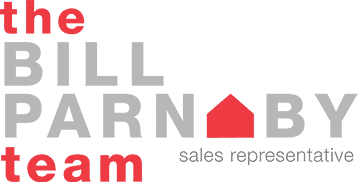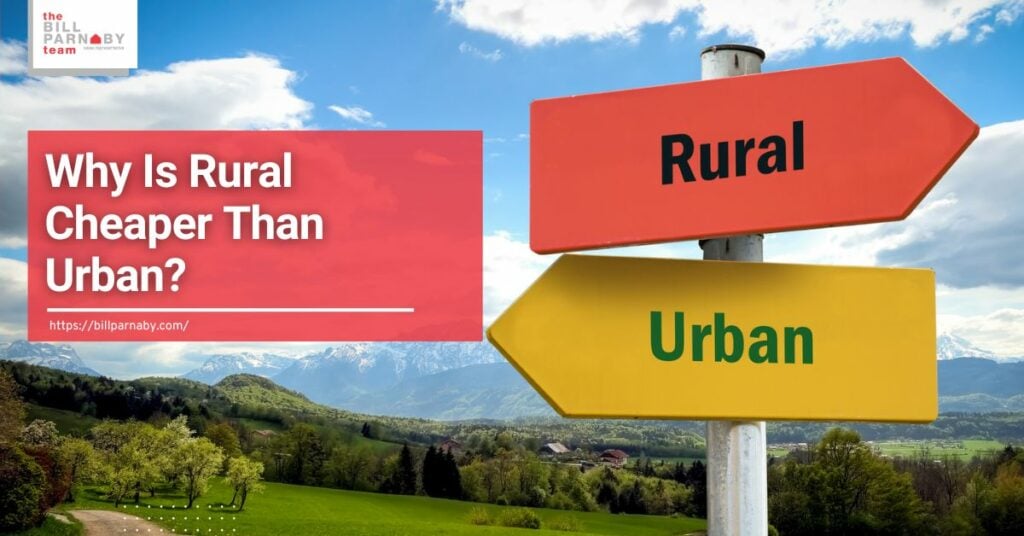Rural areas have long been known for their affordability compared to their urban counterparts.
As buyers and investors, it’s crucial to understand why choosing rural can be a smart financial move. After all, who doesn’t want to stretch their hard-earned dollars?
In this article, we will explore the factors that make rural properties cheaper than urban ones. We’ll also look into land availability, infrastructure costs, and lifestyle differences.
By the end, you’ll be equipped with valuable insights to help you make informed decisions. Uncover why rural is the way to go! Start your search for homes in Caledon.
Let’s now dive into the top four contributing factors affecting the price difference between rural and urban areas.
1. Demand and Population Density
First, let’s consider the impact of demand and population density. Buckle up because we’re about to dive into the exciting world of numbers and people!
Demand
Urban areas resemble a hot, overcrowded party everyone wants to attend.
The high demand for housing in big cities sends average prices through the roof. It leaves many potential buyers feeling like they’ve crash-landed in a comedy show without a ticket.
In contrast, rural areas are a more peaceful gathering.
With fewer people scrambling for properties in small towns, housing prices are lower. It’s like stumbling upon a secret garden party where you can enjoy the tranquillity without the hefty entrance fee!
Population Density
Picture a packed city bus during rush hour, where personal space is as rare as Bigfoot sightings.
With buildings towering over one another in urban areas, space becomes a premium commodity.
Rural settings, on the other hand, resemble a wide-open countryside. It’s where you can stretch your arms and shout to the heavens without worrying about disturbing your neighbours.
Lower population density allows for more land availability. This, in turn, translates into more affordable property prices.
It’s like having an entire field to yourself, where you can grow your dreams at a fraction of the cost.
2. Infrastructure and Amenities

Now, let’s focus on another aspect of the rural-urban price difference: infrastructure and amenities. Get ready to explore the exciting world of roads, utilities, and creature comforts!
Infrastructure Costs
In urban areas, the cost of infrastructure is sky-high. Imagine a fancy restaurant with gold-plated cutlery and an army of sommeliers. These luxurious features would drive up the prices on the menu!
The intricate web of roads, bridges, and utilities in cities also comes with a hefty price tag. And, as you may have already guessed, this gets passed on to property buyers.
Now, imagine a cozy neighbourhood café with humble decor and warm vibes.
The simpler infrastructure requirements in rural areas keep costs lower. And this is what makes properties in rural areas more affordable.
Amenities
Urban areas offer a smorgasbord of amenities at every corner. It’s like a shopping spree in a gigantic mall, where you can find everything from high-end stores to gourmet restaurants.
However, this luxury comes at a price. Businesses in these areas face higher operating costs, which can translate into higher property prices.
In rural areas, amenities are akin to a friendly local market, where you can find fresh produce and familiar faces.
The variety might be limited, but there is a lower cost of living and reduced competition among businesses. These contribute to more affordable properties.
3. Cost of Living
Let’s look at another key reason rural areas offer a more affordable lifestyle. Considering the cost of living in rural vs. urban areas can help you make a financially savvy decision.
Housing
In urban areas, housing costs can be as frustrating as trying to get tickets to a sold-out concert. High demand and limited space drive up the average prices.
It makes you feel like you’re paying for a VIP ticket when you’re actually just watching from the General Admission section.
In rural areas, however, housing costs are significantly more affordable. It’s like paying for an economy ticket and getting bumped up to first class!
The lower cost of housing in rural areas can significantly impact your overall cost of living.
Transportation
City life means almost always being stuck in a traffic jam, especially during the rush hour. Commuting feels like having a sloth drive you to and from work.
The average transportation costs in cities can eat away at your budget faster than a racecar guzzling up fuel.
On the other hand, rural areas offer a smoother ride, with shorter commutes and less traffic. It’s like navigating country roads in a vintage car, where fuel costs and transportation expenses are more manageable.
Daily Expenses
City life can be like dining at a five-star restaurant with gourmet meals and eye-watering prices.
The average cost of groceries, dining out, and entertainment in cities can leave your wallet gasping for breath.
In rural areas, daily expenses are more like a cozy home-cooked meal, where you can savour the flavours without the hefty bill.
Lower food costs and a simpler lifestyle contribute to a more affordable cost of living in rural areas.
4. Economic Opportunities
Are you seeking stable employment or exploring your entrepreneurial spirit? Understanding economic factors will help you make a decision aligning with your career and financial goals.
Job Market
Urban areas are a bustling job fair where competition is fierce, and finding employment is like trying to catch a flying trapeze. The high demand for jobs can drive up the cost of living as you struggle to secure a well-paying position.
In rural areas, the job market is more like a friendly neighbourhood lemonade stand. Opportunities may be limited, but they come with a more affordable lifestyle. The lower competition can offer a breather for your career and your wallet.
Entrepreneurship
Urban areas are a vibrant marketplace brimming with entrepreneurial opportunities at every corner. Starting a business in a city can feel like setting up a luxurious hot dog stand amidst a sea of gourmet food trucks.
The higher costs of rent, utilities, and competition can put a strain on your profit margins.
In rural areas, entrepreneurship is more like running a cozy family-owned bakery. The overhead costs of running a business in a small town are lower.
What’s more, your unique offerings can shine without being overshadowed by big players.
Cost of Doing Business
Urban areas often come with a price tag that feels like playing the stock market on a rollercoaster. The average cost of doing business in cities can be overwhelming. These costs also include permits, licenses, and regulations.
It’s like navigating a treacherous maze where every wrong turn leads to unexpected expenses.
In rural areas, business costs are more like a steady boat ride on a calm lake. The simpler bureaucracy and fewer regulations create a favourable environment for entrepreneurs.
This makes it more cost-effective to start and run a business in small towns.
What Is a Rural Lifestyle?
A rural lifestyle means living in a quieter and less densely populated area. Also, you are typically surrounded by natural landscapes and agricultural spaces.
It often involves a closer connection to nature, a slower pace of life, and a stronger sense of community.
Is It Hard to Live in a Rural Area?
No, it’s not hard to live in a rural area as long as you are prepared for the differences. Expect a noticeable contrast in infrastructure, amenities, and cost of living.
Embracing a more self-sufficient mindset and being adaptable to a slower pace of life can make rural living enjoyable.
Three Good Things About Rural Life
The three good things about rural life are:
- Serene natural beauty. Rural areas offer breathtaking landscapes with rolling hills, lush forests, and picturesque views. They can soothe the soul and provide a peaceful retreat from the hustle and bustle of urban life.
- Strong community bond. In rural areas, there is a sense of tight-knit community where neighbours know each other, and people support one another. This fosters a sense of belonging, genuine connections, and a shared commitment to helping each other.
- Quality of life. The slower pace, lower levels of pollution, and reduced stress of rural living contribute to an overall higher quality of life. Fresh air, ample outdoor activities, and a more relaxed lifestyle can enhance well-being and provide a sense of fulfillment.
Rural vs. Urban Living

The affordability of rural areas compared to urban areas is not just about the price tag. It’s about the quality of life, the sense of community, and the opportunity to truly connect with nature.
So, if you’re looking for a more affordable and fulfilling way of life, consider making the move to the countryside.
You might just find that the simple pleasures of rural living are worth more than any city could ever offer!
Did you know there’s a rural area in the Greater Toronto Area? Yes, it’s the beautiful town of Caledon!
Enjoy waking up to scenic views without giving up access to big-city amenities in Toronto. Contact us today so we can help you find the perfect home in this ideal location!





